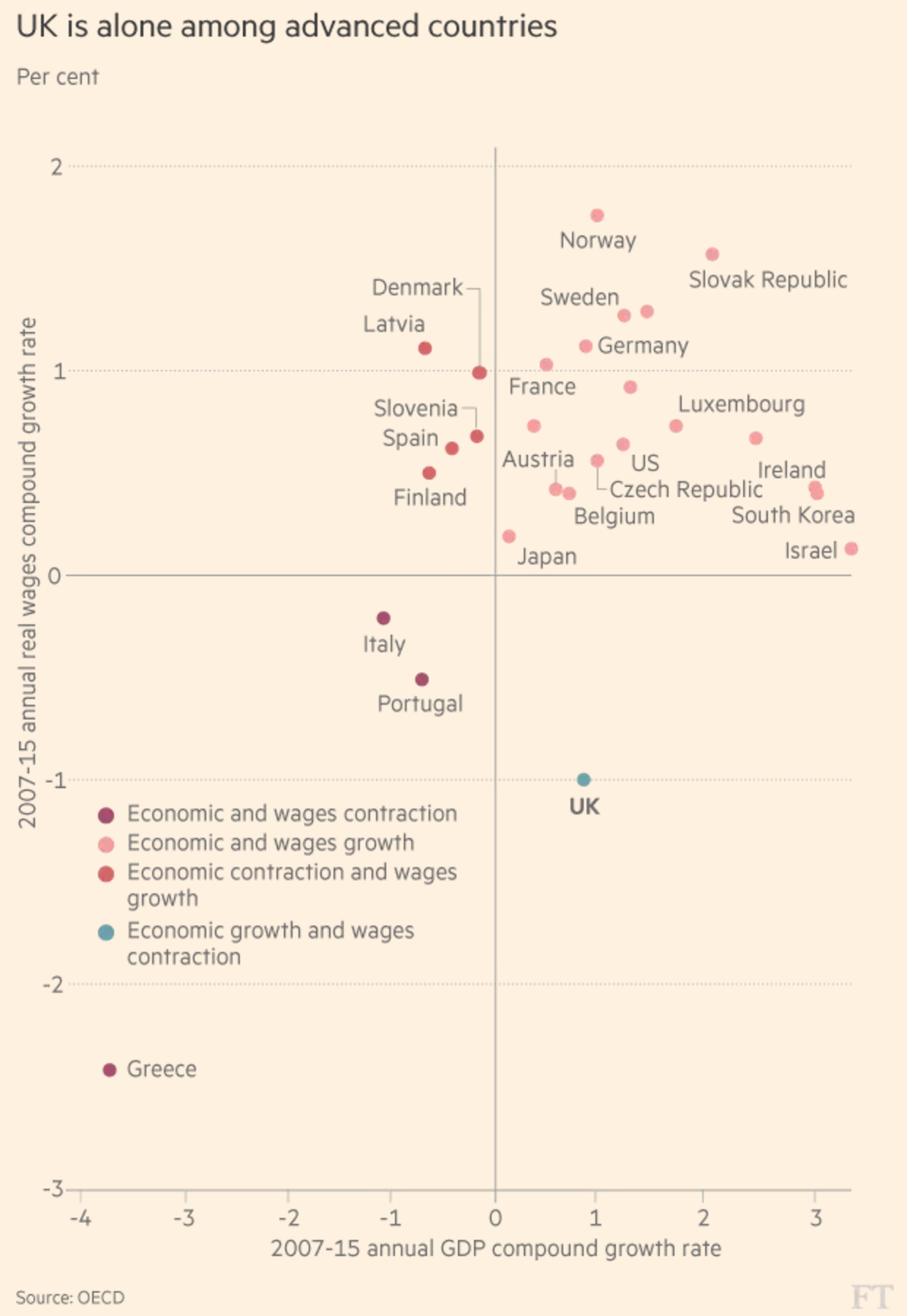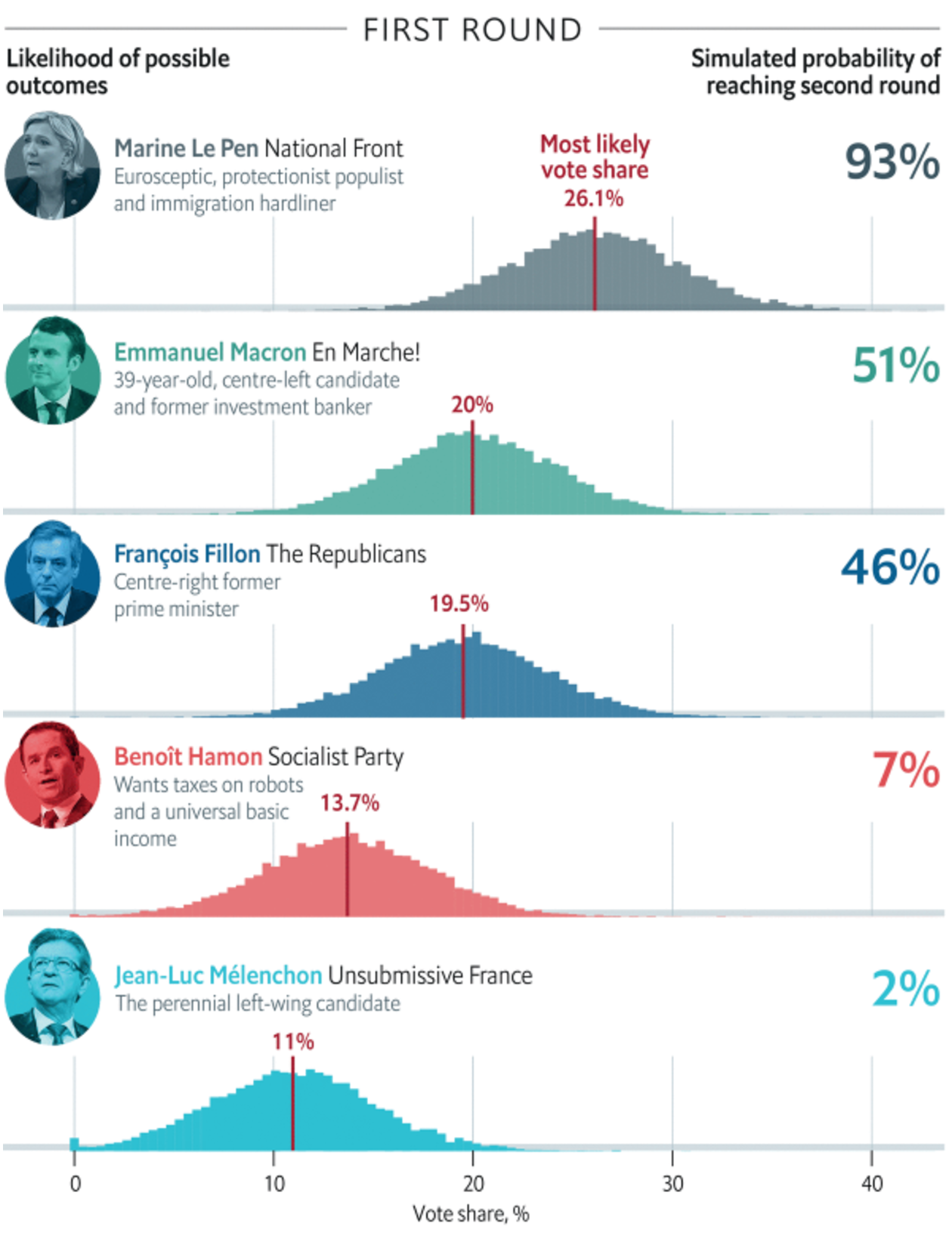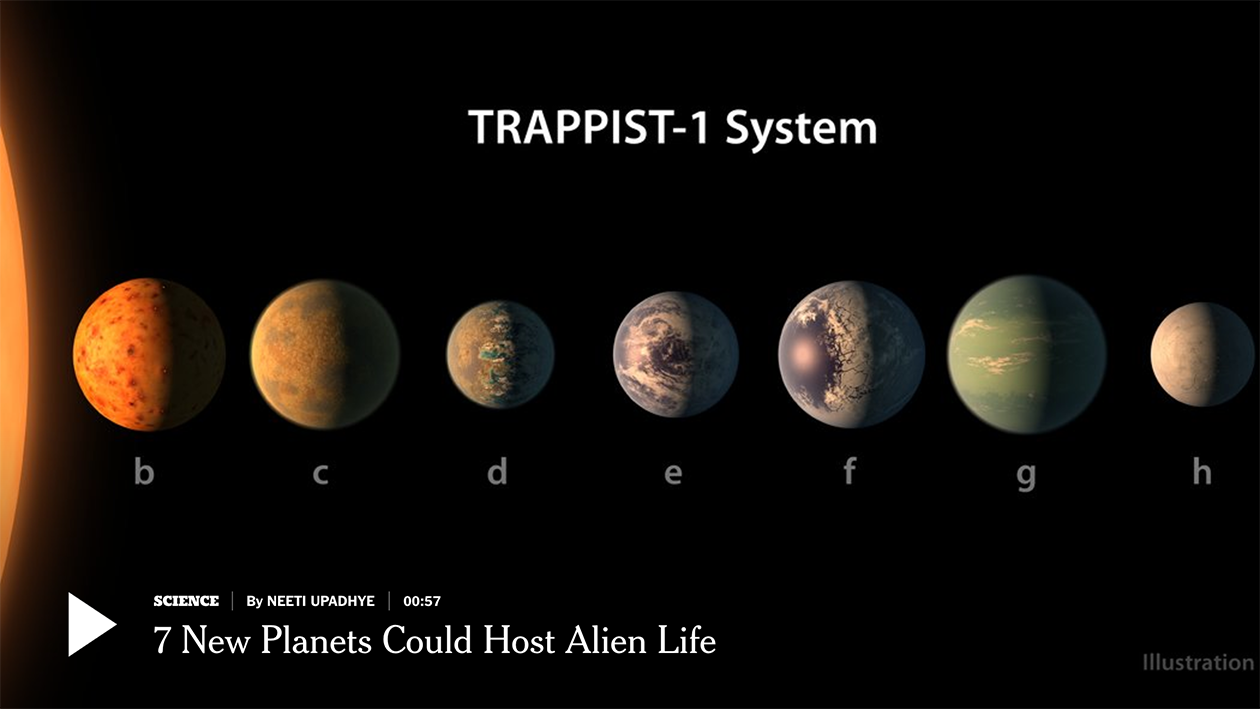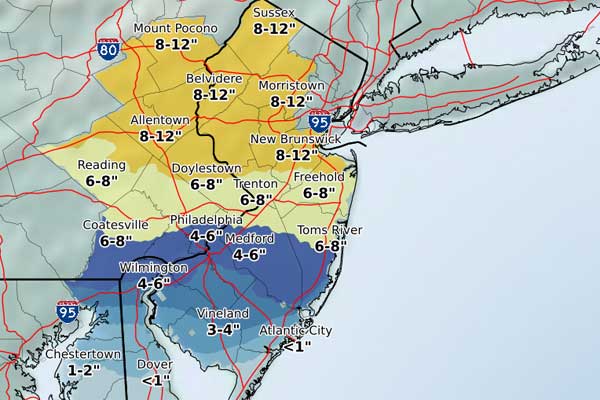Sorry, not sorry.
But also, sorry. This piece was supposed to go up Wednesday after President Trump’s speech where he announced he’d like to spend $1 trillion on infrastructure. But it didn’t post, so you will get two today.
This article from the New York Times dates from about a week or so ago at the height of the flooding out in California. During that deluge, the Oroville Dam emergency spillway partially failed. And a week prior to that, the Twentyone Mile Dam in Nevada burst.
Dams require investment and maintenance along with roads, railways, airports, and well practically all infrastructure. The article leads in with a map locating all those dam locations across the United States and colour codes them by age.
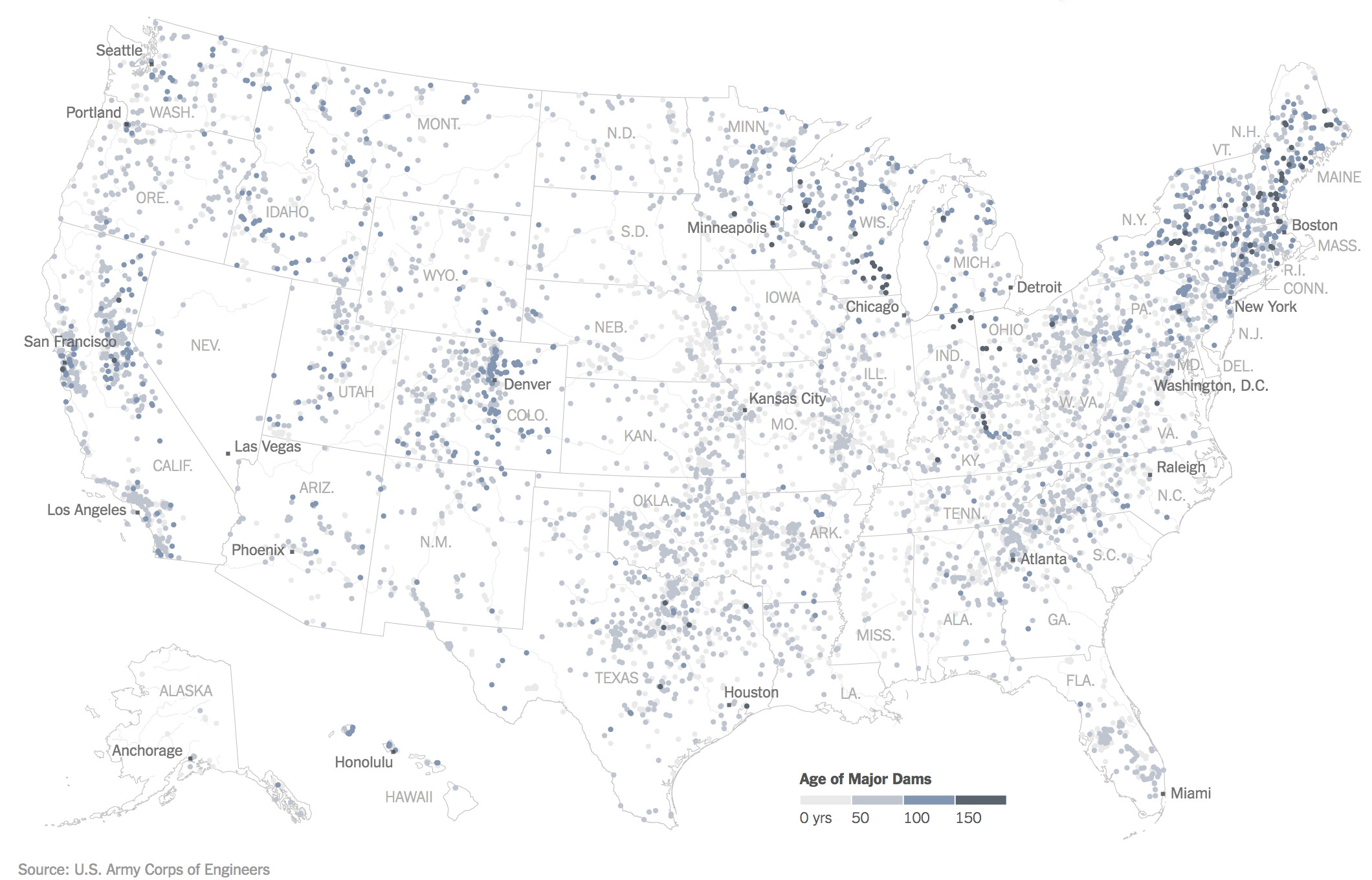
The article outlines the potential costs and risks associated with all this dam stuff and is worth a quick read. It also includes some nice secondary graphics about the dam hazard potential in Nevada.
Sorry, not sorry.
Credit for the piece goes to Troy Griggs, Gregor Aisch, and Sarah Almukhtar.

